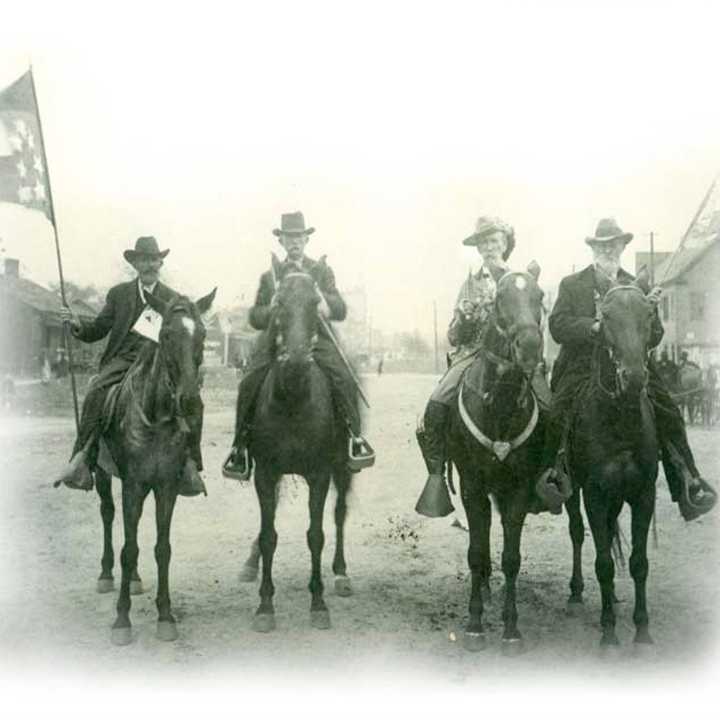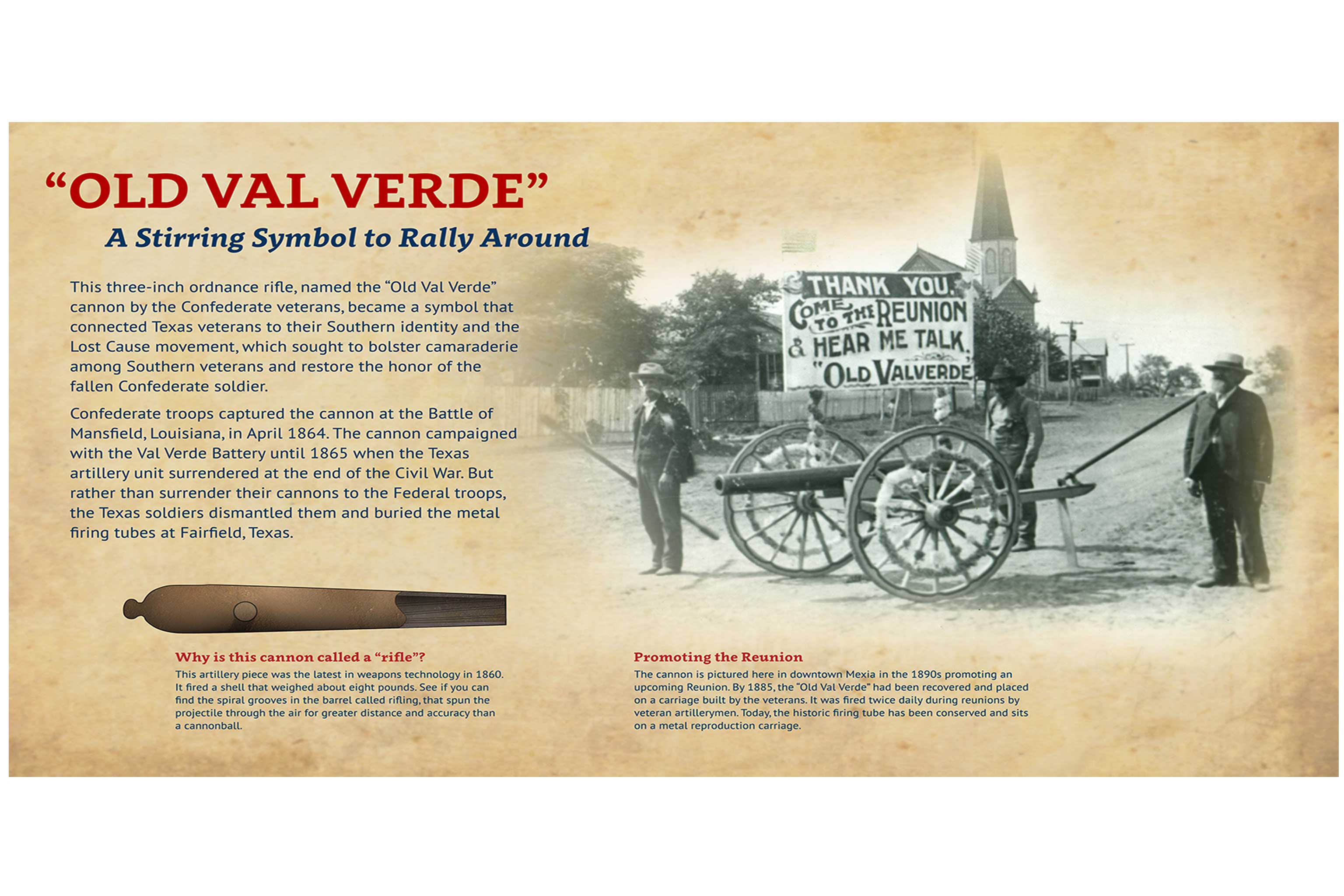Interpretative exhibit design and lessons about American identity and family culture
Our understanding of history changes over time, and the Civil War is a topic that is as alive as ever at the Confederate Reunion Grounds State Historic Site in Mexia, Texas. Established in 1889 as the Joseph E. Johnston Camp of the United Confederate Veterans at a time when the many veterans and their families were alive and well, the grounds are preserved today as State Historic Site managed by the Texas Historical Commission (THC). After the June 2015 tragedy in Charleston at the famous Bethel AME church when nine parishioners were murdered by a man motivated by racial hatred, the Commission responded to the nationwide debate about the public display of the battle flag of the Confederate States of America by removing the Confederate Flags on display at the Reunion Grounds. What was a straightforward storytelling of local history became part of a national dialogue about a historic flag.
While “rebalancing” the interpretation of this historic landscape it was important to understand the role that it played in the community. Although the American Civil War ended in 1865, Confederate Army veterans were not permitted to gather in large numbers until seceding states re-established local rule in the 1870s. Afterward, hundreds of reunion organizations sprang up across the South to share memories of the war. In Limestone County thousands of people gathered at the Reunion Grounds for annual camp meetings. Over several days, they enjoyed speeches, concerts, and dances while raising funds for families of fallen comrades.
Mexia, Texas, July 1st, 1905 General Orders No. 22
All members of Joe Johnston Camp, No. 94, U. C. V. are hereby commanded to answer to roll call at the Reunion Grounds on Tuesday, July 18th, 1905, at 10 o’clock a.m. provided with four days rations, armed and equipped to have a good time. Leave all cares behind and “turn yourselves loose” for four days.
Excerpted from the Groesbeck Journal, July 6, 1905
The THC originally asked Content•Design Collaborative to develop an interpretative program that showcases the Reunion Grounds’ rich history, but in addition to implementing a program in which the battle flag of the Confederate States can be displayed in a way acceptable to all visitors. Here is how we brought the story to life for residents and tourists.
Unfold the narrative in pieces. Put historic photographs front and center.
We designed and wrote eight graphic panels that guide visitors through place and time along walking trails and picnic areas. We used captivating images, skillfully preserved by THC researchers and archivists, to give visitors a palpable sense of humanity from long ago. This panel explains the history of Old Val Verde, a Civil War-era cannon that Reunion Grounds campers fired to start and end each day. The weapon symbolized a national movement known as Lost Cause, which sought to strengthen camaraderie among Southern veterans and restore the honor of fallen Confederate soldiers. This image might make the 21st-century viewer think of his regional pride, the US military, or perhaps any political cause championed by parade marchers.
![Here, we explain how the Reunion Grounds experienced a second wave of popularity during the 1920s Oil Boom in nearby Mexia [muh-hay-a]. When oil entrepreneur AJ Humphrey damned the Navasota River to harness water for his oil fields, he transformed the Grounds into a popular swimming area complete with bathhouse, water slide, and footbridge.](http://contentdesign.me/wp-content/uploads/2016/07/Postcard-CRG.2012.1.7.2.jpg)
Mix and match other visual elements
Few trail walkers will pore over a panel offering dry renditions of facts. Instead, our compositions capture the eye through inset orientation maps, subheads, and photo captions. Here, we explain how the Reunion Grounds experienced a second wave of popularity during the 1920s Oil Boom in nearby Mexia [muh-hay-a]. When oil entrepreneur AJ Humphrey damned the Navasota River to harness water for his oil fields, he transformed the Grounds into a popular swimming area complete with bathhouse, water slide, and footbridge. The Reunion Grounds serves as a historically valuable site which provides visitors with the context in which to understand the very complex issues of the past and the present.

Give a controversial symbol context
Initially, the Reunion Grounds provided a lesson on all the flags flown during the 5-year life of the Confederacy. Few visitors understand that the familiar image of the battle flag was not the official flag of the Confederacy, but only one of many individual army units flags flown by soldiers on both sides of the conflict. The familiar stars and bars pennant was created by the military of northern Virginia but for various reasons became emblematic of the Confederate aspect of the Civil War. Together with the staff of the Commission, we created a graphic display that enabled the staff at the Reunion Grounds to show a total of 14 flags, both Union and Confederate. Visitors now learn about flags such as Hardee Pattern Battle Flag that was inspired by the Irish Full Moon Rebellion of 1778 or how the 1863 United States 34-star flag contained the stars of the Confederate States because they were still considered part of the Union.
Now visitors to the Reunion grounds will not only learn about the famous dance pavilion, a water park on the Navasota River, and the Mexia oil boom, they will get a short lesson in Vexillology, or the study of flags.



